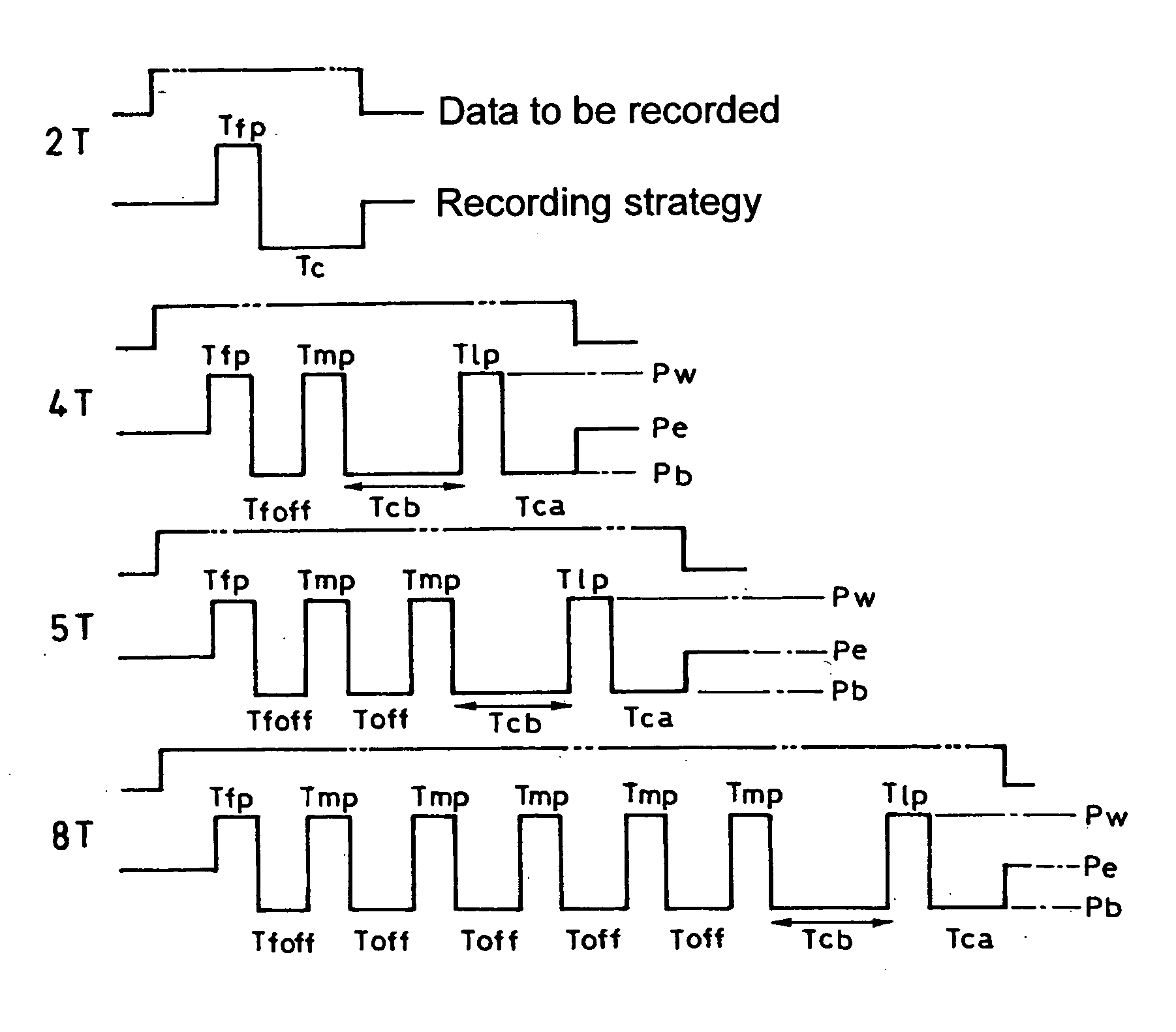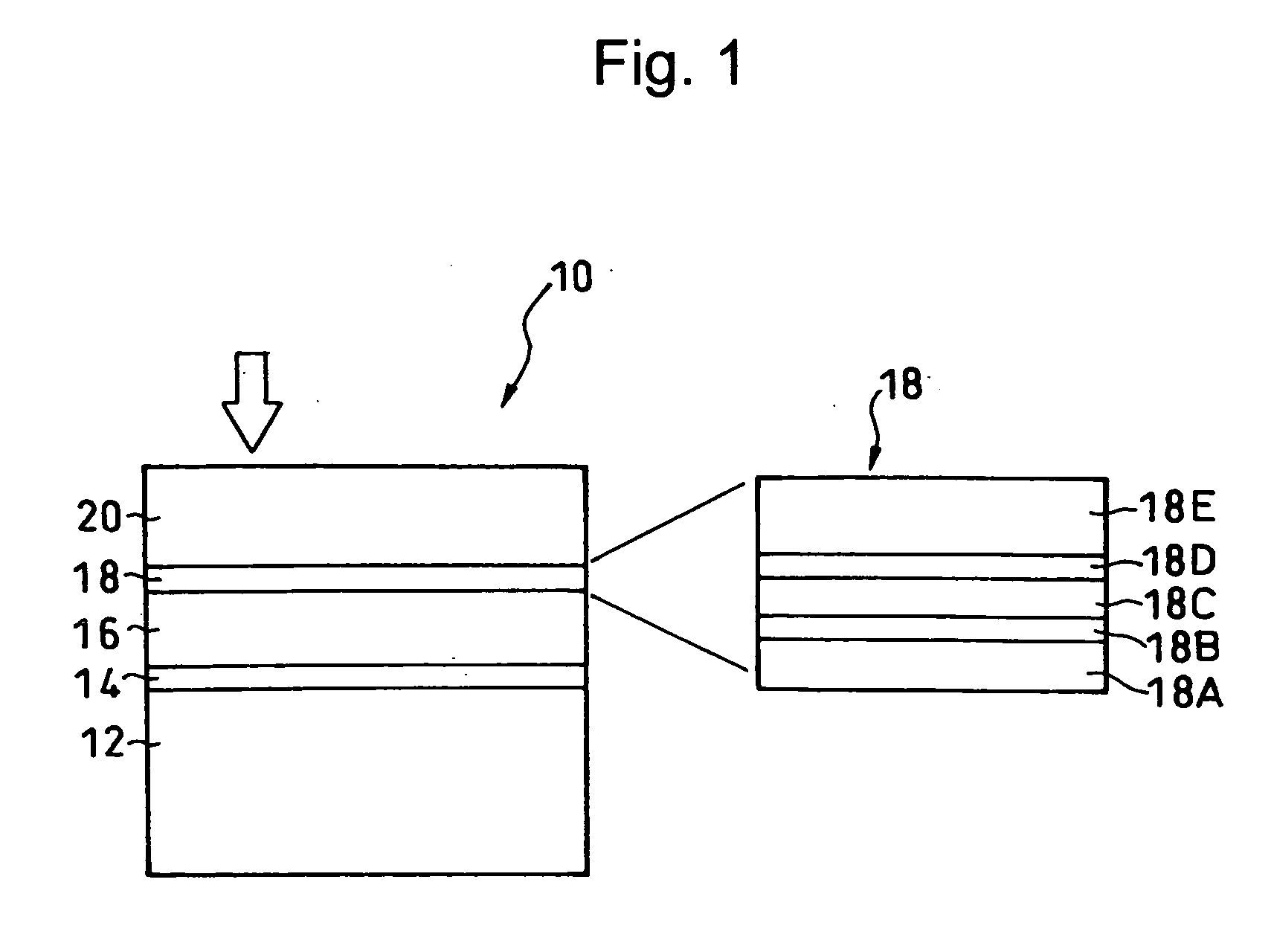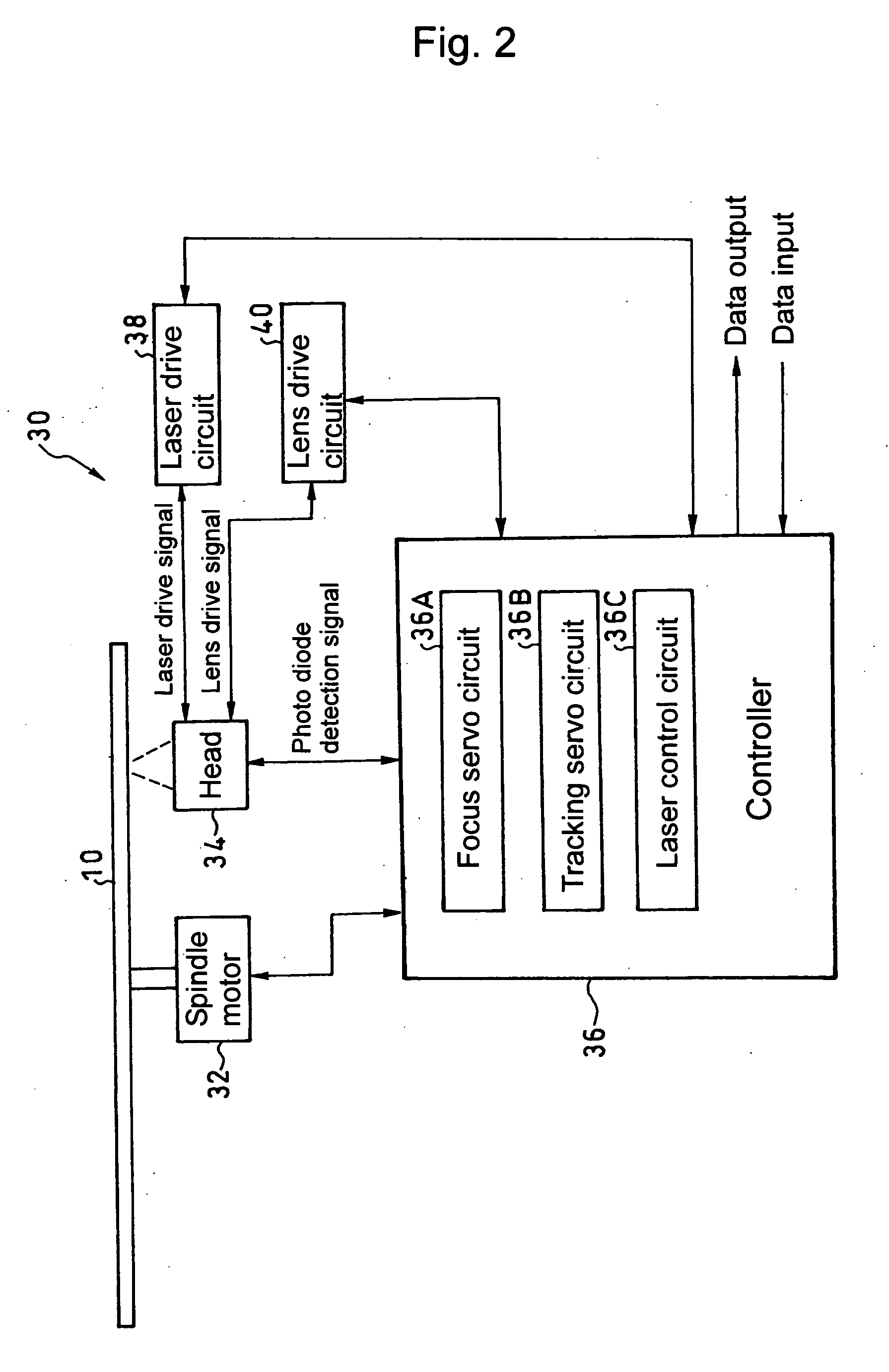Method of recording data on optical recording media and optical recording device
a recording media and optical recording technology, applied in the field of optical recording media, can solve the problems of inability to solve the problem, loss of margins, and indistinct trailing edges of recording marks, and achieve the effect of preventing heat interference between consecutive recording marks and cross-erase between adjacent tracks
- Summary
- Abstract
- Description
- Claims
- Application Information
AI Technical Summary
Benefits of technology
Problems solved by technology
Method used
Image
Examples
first exemplary embodiment
[0036] A first exemplary embodiment of the present invention will be hereinafter described in detail with reference to FIG. 1 and FIG. 2.
[0037] An optical recording medium 10 according to the first exemplary embodiment includes a first recording layer or L0 layer 14, a transparent intermediate layer 16, a second recording layer or L1 layer (hereinafter “recording layer”) 18, and a light transmitting layer 20 laminated on a substrate 12 in this order.
[0038] The recording layer 18 includes, as shown in enlargement in FIG. 1, an underlayer 18A on the transparent intermediate layer 16, a metal heat-sink layer 18B, a second protection layer 18C, a phase-change recording layer 18D, and a first protection layer 18E, laminated upon one another in this order.
[0039] The metal heat-sink layer 18B is provided for heat-sink and light interference and is made preferably of an Ag alloy. The layer thickness t is 018 has an overall light transmittance of 30% to 80% at a recording wavelength. The ...
example 1
[0059] Double-layer optical recording media similarly structured as the medium 10 of FIG. 1 were produced, and the recording / reproducing characteristics of their recording layers (L1 layers) were evaluated.
[0060] The followings are the attributes of the double-layer optical recording media:
[0061] Substrate thickness: 1.1 mm; Thickness of transparent intermediate layer: 25 μm; Thickness of light transmitting layer 75 μm; Material and thickness of phase-change recording layer in L1 layer: Sb eutectic alloy, 6 nm; Material and thickness of metal heat-sink layer: Ag alloy, 10 nm; Material of the 1st protection layer, 2nd protection layer, and underlayer: Laminated dielectric layers of AlN, ZnS—SiO2, and ZrO2; Thickness of 1st protection layer: 60 nm; Thickness of 2nd protection layer: 5 nm; Thickness of underlayer: 5 nm.
[0062] After making the L1 layer (phase-change recording layer) in the crystalline state using an initializing device (initialization), random signals were recorded w...
example 2
[0074] The clock jitter was measured during reproducing from the L1 layer of the double-layer optical recording media recorded in the same condition as in the example 1 except that the width of Tcb was varied sequentially (0.8T, 1.2T, 1.6T, 2.0T, and 2.4T) and the erase power Pe was varied between 2.6 mW and 5.5 mW. FIG. 7 and Table 1 show the measurement results thereof.
TABLE 1ConventionalStrategyTcb =Tcb =Tcb =Tcb =Tcb =Pe(Tcb = 0.7T)0.8T1.2T1.6T2.0T2.4T2.6Limit11.7511.6011.402.9−Jitter8.608.708.9010.1011.003.2(%)7.107.257.658.258.9012.203.57.006.907.157.458.0010.253.87.306.956.957.157.659.154.18.607.957.157.157.559.054.49.608.907.407.257.559.204.711.3010.208.007.807.959.805.012.059.409.008.7010.605.511.8011.2510.6512.10
[0075] These results show that, when the pulse width of the cooling pulse Tcb is set between 0.8T and 2.0T, the clock jitter is smaller in comparison with the cases where Tcb was set to 0.7T and 2.4T. Namely, this means the recording mark can be formed clear.
[00...
PUM
| Property | Measurement | Unit |
|---|---|---|
| light transmittance | aaaaa | aaaaa |
| thick | aaaaa | aaaaa |
| thick | aaaaa | aaaaa |
Abstract
Description
Claims
Application Information
 Login to View More
Login to View More - R&D
- Intellectual Property
- Life Sciences
- Materials
- Tech Scout
- Unparalleled Data Quality
- Higher Quality Content
- 60% Fewer Hallucinations
Browse by: Latest US Patents, China's latest patents, Technical Efficacy Thesaurus, Application Domain, Technology Topic, Popular Technical Reports.
© 2025 PatSnap. All rights reserved.Legal|Privacy policy|Modern Slavery Act Transparency Statement|Sitemap|About US| Contact US: help@patsnap.com



